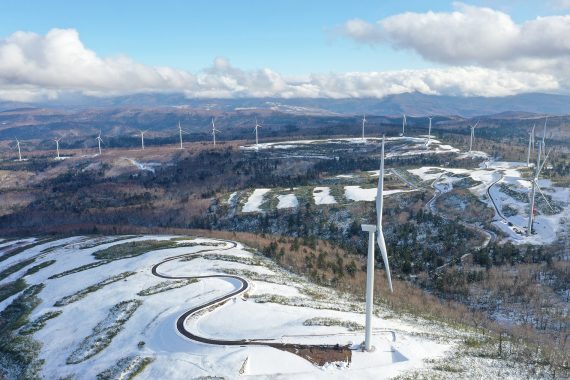Honda Facilities Slash Energy Usage with LED Lighting
In Honda’s latest environmental vision, Honda Motor Co. President and CEO Takahiro Hachigo announced that the world’s largest engine manufacturer intends to cut its total company CO2 emissions by 50 percent by the year 2050.
And since electric usage accounts for 70 percent of the CO2 emissions produced by Honda’s North American manufacturing facilities, it stands to reason that cutting electric usage is central to the company advancing toward its goals.
In the past year, Honda’s North American plants have undertaken a number of initiatives to reduce their energy usage and many of them are finding success through the usage of LED lighting.
Honda manufacturing plants in Ohio, Indiana, Alabama and Canada have all incorporated changes to LED lighting as part of their energy reduction plans, but many are finding other benefits to the lighting as well.
“LED lighting is a win-win for Honda,” said Honda North America Facilities Manager Karen Heyob. “It reduces both our environmental impact and our operating cost. LED lighting is not only energy efficient, reducing electricity use and greenhouse gas emissions, but it also eliminates mercury in our plants and offices. And, they are 100 percent recyclable.”
LED lighting fixtures vary throughout the facilities. Some, like Honda Transmission Mfg. of America in Russells Point, Ohio, use them for emergency lighting. Others, like Honda Manufacturing of Alabama (HMA) use the increased lighting intensity to allow associates to improve upon their already high vehicle quality.
“During final quality inspection, associates were having difficulty seeing defects in finished painted bodies,” said HMA Environmental Manager Mark McNally. “After investigating several lighting options, we retrofit existing fluorescent fixtures to accommodate LED lighting. This not only was more efficient, but it also provided greater flexibility of adjustment to allow inspectors to see defects.”
Estimates of energy savings from the use of LEDs range from 25 to 35 percent over fluorescent tube lamps and as much as 50 percent over ceramic metal halide lighting commonly used as floor lighting in large production facilities. When coupled with the longer life of the LED bulbs (10- to 15-year replacement as opposed to the three-year life span of traditional bulbs) and the environmentally-friendly makeup of the lights, Honda is finding that there are multiple benefits in using the LED fixtures.
“For new construction, LED light fixtures are really the only choice that makes any sense,” said Honda Green Factory Leader Dirk Nordberg. “LED fixtures waste less energy converting electricity into light, so they use less energy and generate less heat. That is a direct saving on energy costs and an indirect saving to air conditioning costs.”
New construction accounts for a percentage of the LED usage in Honda facilities, but existing plants are also finding value in retrofitting or replacing older fixtures. At Honda’s largest global engine plant in Anna, Ohio, nearly 700 lights were replaced with LEDs this year, including in the engine build room where master builders assemble the new Acura NSX supercar engine.
“LEDs give us the ability to tailor the lighting intensity, distribution, and color to meet very specific design criteria,” Nordberg said. “This can improve quality in our manufacturing processes and reduce eye strain in office areas. For processes where exacting measurements are expected and tolerances are small, the quality of the new lighting is essential for quality control.”

